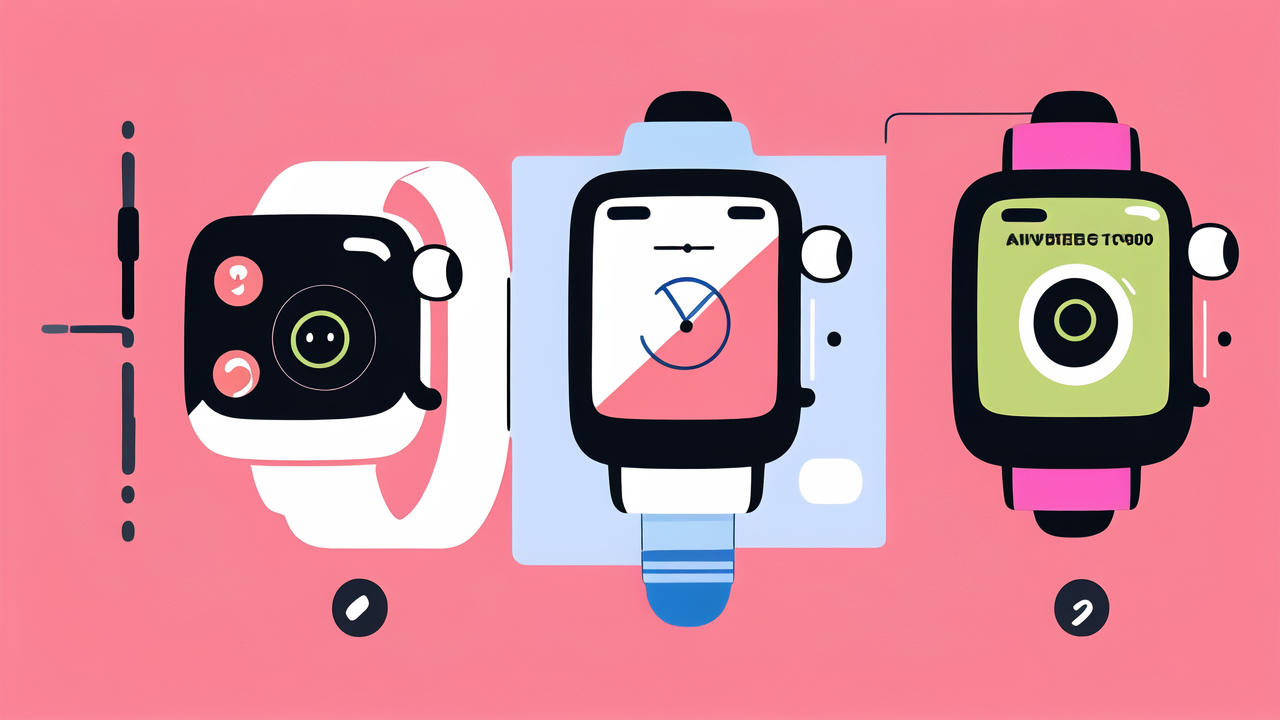Evolution of Fitness Watches in the United States
From Pedometers to Smart Wearables: A Historical Perspective
The journey of fitness trackers began with simple pedometers. These devices counted steps and little else. Over time, they evolved into more complex tools. The first digital pedometers appeared in the 1980s. They were basic but marked a significant shift.

As technology advanced, so did fitness trackers. The late 2000s saw the rise of wearable tech. Brands like Fitbit and Garmin entered the market. They offered devices that did more than count steps. These new trackers monitored heart rate and sleep patterns.
The real game-changer came with the introduction of smartwatches. Apple Watch, launched in 2015, set a new standard. It combined fitness tracking with smartphone features. This blend of function and style appealed to a wider audience.
The Role of Technology in Advancing Fitness Tracking
Technology has been the driving force behind fitness watch evolution. Sensors have become more accurate and diverse. They can now track various health metrics. These include heart rate, blood oxygen levels, and even ECG readings.
GPS integration was a major leap forward. It allowed for precise tracking of runs and bike rides. This feature appealed to serious athletes and casual users alike. Waterproofing technology made swim tracking possible.
Battery life has also improved significantly. Early fitness trackers needed frequent charging. Now, many can last a week or more on a single charge. This makes them more convenient for daily use.
Data analysis has become more sophisticated. AI and machine learning now offer personalized insights. Users can get tailored workout suggestions and health tips. This makes fitness watches more like personal trainers on your wrist.
Current Trends in Fitness Watch Adoption
Fitness watches have become mainstream in recent years. They're no longer just for tech enthusiasts or athletes. Many people now see them as essential daily wear. The COVID-19 pandemic has accelerated this trend.
Health monitoring features are a big draw. People are more health-conscious than ever. Fitness watches offer a way to keep track of vital signs. This gives users a sense of control over their health.
Integration with smartphones has boosted adoption. Fitness watches can now display notifications and messages. This makes them more useful in everyday life, not just during workouts.
Customization is another trend. Users can choose from various watch faces and bands. This allows them to express their personal style. It's no longer just about function, but fashion too.
The Impact of Fitness Watches on Consumer Behavior
How Fitness Watches Influence Exercise Routines
Fitness watches have transformed how people approach exercise. They provide real-time feedback during workouts. This immediate data helps users adjust their intensity and pace. Many find this motivating and empowering.

Goal-setting features are particularly influential. Users can set daily step counts or calorie burn targets. Watching progress bars fill up can be very satisfying. It often encourages people to be more active.
Competitive elements have also changed behavior. Many fitness watches allow users to compete with friends. This social aspect adds fun and motivation to exercise routines. It can turn fitness into a group activity, even when working out alone.
Guided workouts are another game-changer. Some watches offer on-screen exercise instructions. This is like having a personal trainer on your wrist. It helps users try new workouts and improve their form.
The Role of Fitness Watches in Healthy Lifestyle Adoption
Fitness watches do more than track exercise. They promote overall healthy lifestyles. Sleep tracking is a key feature in this regard. It helps users understand their sleep patterns and quality. This can lead to better sleep habits and overall health.
Stress management features are becoming more common. Some watches track heart rate variability. This can indicate stress levels. They may then suggest breathing exercises or meditation. This helps users manage stress throughout the day.
Hydration tracking is another useful feature. Some watches remind users to drink water regularly. This simple prompt can lead to better hydration habits. It's especially helpful for those who often forget to drink enough water.
Activity reminders encourage movement throughout the day. A gentle buzz can remind users to stand up or take a short walk. This combats the negative effects of prolonged sitting. It's particularly useful for those with desk jobs.
Behavioral Insights from Fitness Watch Data
The data collected by fitness watches offers valuable insights. It shows patterns in user behavior over time. This information is useful for both individuals and researchers. It can reveal trends in physical activity and health on a larger scale.
Personal data helps users understand their habits better. They can see how their activity levels change over weeks or months. This awareness often leads to positive changes in behavior. Users might notice they're less active on certain days and adjust accordingly.
Sleep data has been particularly eye-opening for many users. Seeing concrete data about sleep duration and quality can be motivating. It often leads to better sleep hygiene practices. This, in turn, can improve overall health and well-being.
Heart rate data provides insights into cardiovascular health. Users can see how their heart responds to different activities. This can help in planning more effective workouts. It also allows users to monitor their heart health over time.
The Fitness Watch Market: Predictions and Innovations
Upcoming Technologies in Fitness Watch Development
The future of fitness watches looks exciting. New technologies are set to make them even more useful. One area of focus is non-invasive health monitoring. Watches may soon be able to track blood glucose levels. This would be a game-changer for people with diabetes.

Improved sensors are on the horizon. These will make fitness watches more accurate. They may be able to detect early signs of health issues. This could include things like irregular heartbeats or sleep apnea. Early detection could save lives.
Battery technology is also advancing. We may soon see fitness watches that never need charging. Some companies are working on solar-powered watches. Others are exploring kinetic charging, using the wearer's movement to generate power.
AI integration will become more sophisticated. Watches may offer more personalized health advice. They could analyze your data and suggest lifestyle changes. This would make them even more like having a personal health coach.
The Fitness Watch Market Dynamics and Consumer Preferences
The fitness watch market is becoming more diverse. Different brands are targeting specific niches. Some focus on serious athletes, others on casual users. This segmentation is likely to continue.
Price points are also varied. There are high-end luxury fitness watches and budget-friendly options. This range makes fitness watches accessible to a wider audience. It also allows users to choose based on their needs and budget.
Design is becoming more important. Many users want a watch that looks good in all settings. This has led to more stylish options. Some watches can change their look with swappable bands or digital faces.
Privacy concerns are shaping the market. Users are more aware of data security issues. Brands that prioritize data protection may have an advantage. We may see more encrypted storage and user control over data sharing.
Future Predictions: The Growth of Fitness Watch Industry
The fitness watch industry is set for continued growth. More people are prioritizing health and wellness. Fitness watches fit perfectly into this trend. They offer a tangible way to engage with personal health.
Integration with healthcare systems is a likely future development. Fitness watches could share data directly with doctors. This could lead to more proactive and personalized healthcare. It may also reduce the need for in-person check-ups.
The line between fitness watches and medical devices may blur. We might see more FDA-approved features. This could expand the use of fitness watches in managing chronic conditions. It would make them even more valuable for health monitoring.
As technology advances, fitness watches may become even more central to our lives. They might integrate with smart home systems or virtual assistants. This would make them a hub for managing not just health, but daily life. The future of fitness watches is bright and full of potential.




Leave a comment
This site is protected by hCaptcha and the hCaptcha Privacy Policy and Terms of Service apply.